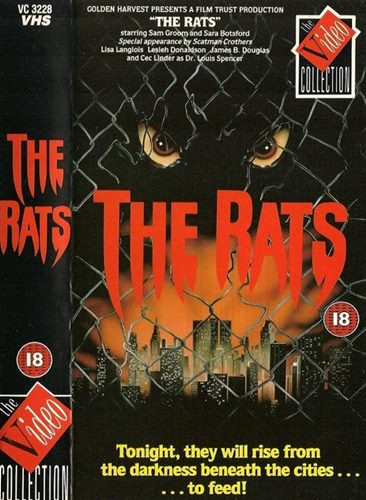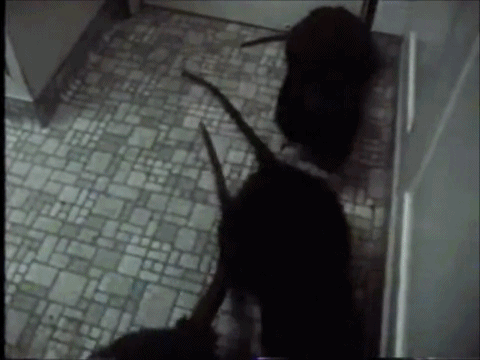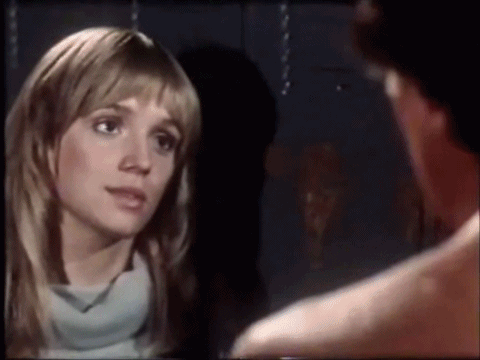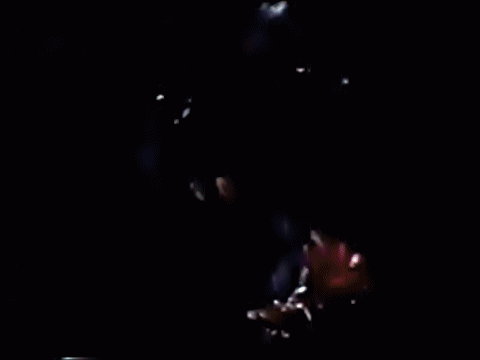The Rats (1982) – Film Summary and Review

Also known as Deadly Eyes, The Rats is a Canadian horror film released in 1982. It’s based on the bestselling novel by James Herbert. There are many differences between the film and the book, the most obvious of which is the setting. Herbert’s original story is set in the UK but the film is set in Toronto.
James Herbert was so unimpressed by the big-screen interpretation of his story that he dismissed it as “absolute rubbish”. All in all, though, the film is not that bad. It has many redeeming features and may one day be considered a classic.
The film begins by introducing the central character, high school teacher, Paul Harris (Sam Groom), who has taken his class to listen to a lecture about rats. Meanwhile, health department inspector, Kelly Leonard (Sara Botsford), is busy at the docks. She has just finished examining a large shipment of grain and has been forced to order its destruction because it contains dangerously high amounts of steroids.
Kelly is a true professional, so she does not sway from her duty when the owner of the grain offers to pay her to turn a blind eye, much to the amusement of her colleague, George Foskins (Scatman Crothers). There are no prizes offered to anyone who guesses the local rat population has been feeding on all that steroid-laced grain and grown unnaturally big and strong.
When the grain goes up in smoke the rats flee the dockyard and take up residence in the city’s sewer system instead. The sewers run the length and breadth of the city, and the rats have to eat, so it is not long before the rats claim their first human victim—a young child in a highchair. Taking advantage of the open kitchen door, they scurry inside, and by the time the young girl’s sister comes to check on her the highchair has been turned over and there are some nasty blood smears leading towards the door.

Paul and Kelly first meet at the hospital. Paul is there to check on one of his students, who has been bitten by something with incredibly powerful jaws—much too powerful to be a dog, according to the doctor—and Kelly has been sent to try and discover what manner of beast could have inflicted such a terrible wound. It is obvious there is a spark between the two right from the start, and then, after they have another chance encounter at the park, Kelly rings him up at home and invites him out on a date. It probably should have been the other way around, but by now Paul should be used to women throwing themselves at him because he has recently had to fend off the amorous advances of one of his students, Trudy White (Lisa Langlois), a girl with such a serious eye-candy status that many men could get toothache just by looking at her, or at the very least a little moral decay.
Just like Kelly though, Paul is a professional, so he managed to resist temptation, even when Trudy cornered him in the locker room and stole a kiss from him. Not one to take no for an answer, Trudy later sneaks into his apartment and waits for him in bed, and with the tragic timing that is so common in films, Kelly turns up five minutes later, gets the wrong idea entirely, and takes the poor guy for a love rat.

The Rats is set in a big city so it would have been all too easy for the director to try and show the effects of the infestation on too large a scale, but this would have probably taken much away from the film. Instead, he chose to concentrate on Paul and Kelly and the people around them, and the way the rats affected their lives. The child in the highchair was the sister of one of Paul’s students. Another of his students worked part-time at a bowling alley and became rat bait when he tried to do some maintenance at the back of the skittle machine. While this was happening his date was waiting for him at the cinema and was caught in the stampede as fellow filmgoers tried to escape the building when the rats attacked in the middle of a Bruce Lee film.
A certain amount of blood and gore is only to be expected in a film of this nature and some of the scenes are pretty nasty but viewers are only allowed quick flashes of the feeding rats, so the film is unlikely to offend too many viewers or necessitate the use of a barf bag.
The fact that the rats are only shown in short glimpses—a long tail, some teeth, or some scurrying bodies—probably works better than if viewers were allowed a closer look at the beasts behind those deadly teeth. This was also a wise precaution on the part of the producers because the rats in this film are really dachshund dogs wearing cunning disguises. A similar technique was used in 1959 for The Killer Shrews film and was not particularly convincing, but this film just about manages to pull it off and the deception seems almost real.

Even though James Herbert hated the big screen version of his book, there isn’t really much to complain about. The cast is very capable, the film never really slows or becomes boring, and although not everyone will love it, The Rats can still hold its own against many newer films that may have better special effects, but fail to have the same charisma as this classic slice of 80s horror.
Sadly, at the time of this review, The Rats is only available on VHS videotape. Other options may become available in the future but, for now, the film seems to be a largely forgotten gem that can only be appreciated by viewers who still possess the necessary older technology—a VCR.
